Get PeakVisor App
Sign In
Search by GPS coordinates
- Latitude
- ° ' ''
- Longitude
- ° ' ''
- Units of Length

Yes
Cancel
Share ×

Scan the QR code and open PeakVisor on your phone
❤ Wishlist ×
Choose
Delete
Scale the summits of some of the highest mountains in the Carpathian Mountains and Bohemian Massif when you visit Poland. There are 19295 named mountains in Poland. Rysy (2,503 m/8,211 ft) is the highest point. The most prominent mountain is Śnieżka (Sněžka) (1,603 m/5,259 ft).

Poland (Polska) is a country in Central Europe covering an area of approximately 312,696 sq km (120,733 sq mi). It's the ninth-largest country in Europe and the sixty-ninth largest country globally.
Poland shares its borders with seven countries: Russia (Kaliningrad Oblast) and Lithuania to the northeast, Czechia and Slovakia to the south, Belarus and Ukraine to the east, and Germany to the west. Poland has one 770 km (480 mi) long coastline bordering the Baltic Sea to its north.

The geography of Poland is diverse due to its position between the Central European Plain, the forests of northwestern Europe, and the fertile plains of Eurasia.
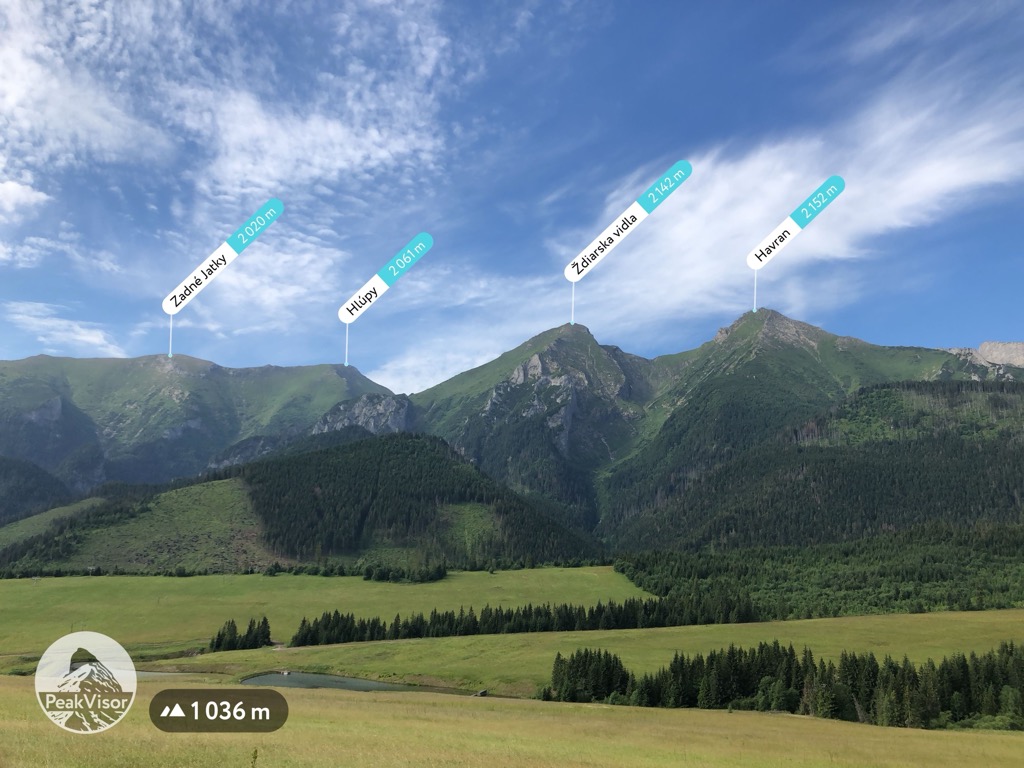
Generally speaking, Poland rises in elevation from north to south, from low-lying coastal plains in the north to central uplands to high mountain ranges in the south. The average elevation of Poland is 568 ft (173 m). Despite significant mountain ranges on the country's southern border, only 3 percent of Poland exceeds 500 m (1,640 ft) in elevation.
The mountainous south of Poland is dominated by two mountain chains, the Carpathian (Karpaty) Mountains to the southeast and the Sudeten (Sudety) Mountains to the southwest.
The most significant massif in Poland is the Tatra Mountains, which contain many of Poland's highest mountains, including Rysy (2,503 m/8,211 ft). The highest peak in the Sudetes is Śnieżka (Sněžka) (1,603 m/5,259 ft), which is part of the Karkonosze Mountains.
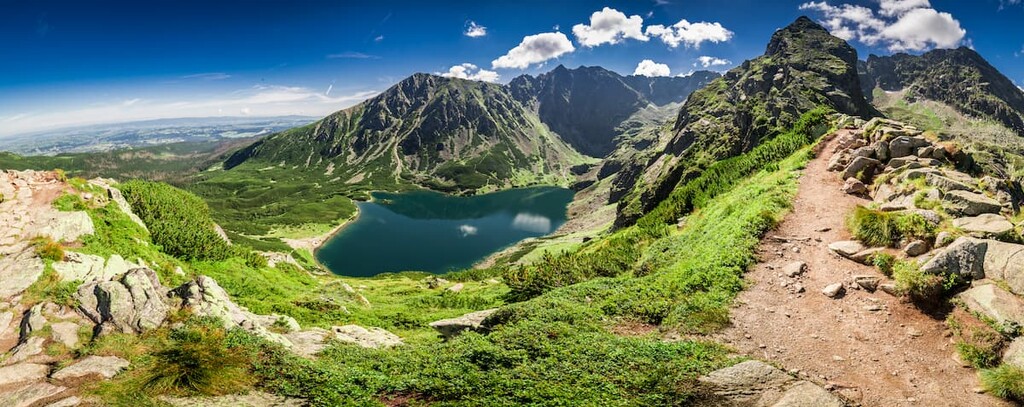
The administration of Poland is split into 16 voivodeships (provinces):
The Masovian Voivodeship is the largest and most populous, with a total area of 35,559 sq km (13,729 sq mi) and a population of roughly 5,432,000 people.
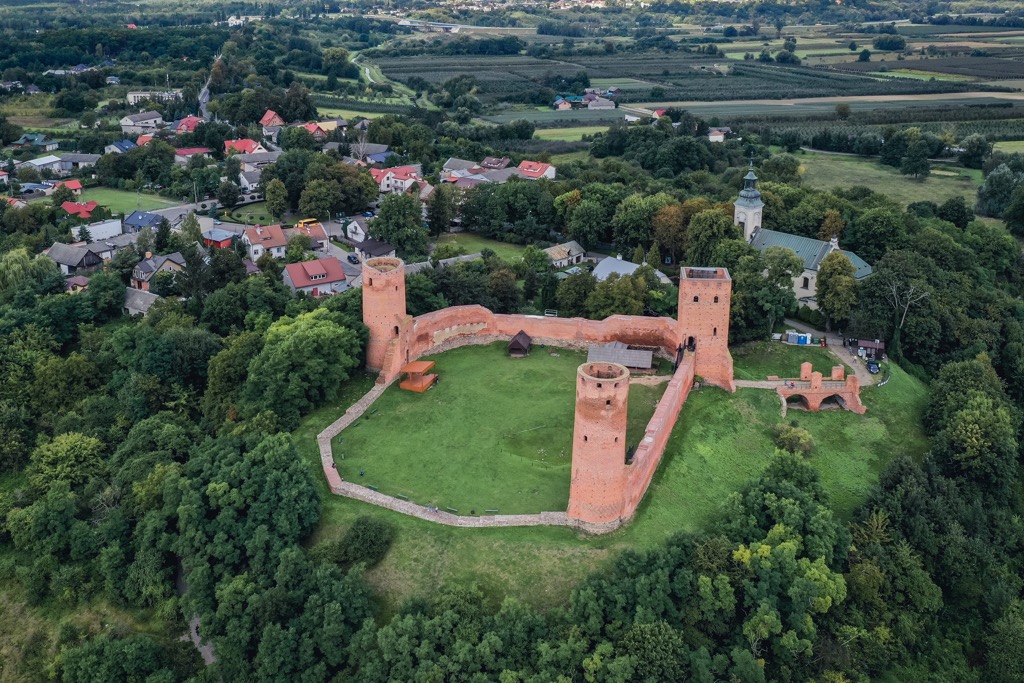
The countryside of Poland is extensively protected, with 23 national parks across the country. The largest of these national parks is Biebrza National Park (Biebrzański Park Narodowy), which covers an area of 592 sq km (228 sq mi) in the northeastern Podlaskie Voivodeship.
National parks in Poland that are popular with mountain hikers include Tatra National Park (Tatrzański Park Narodowy), Bieszczady National Park (Bieszczadzki Park Narodowy), Stołowe Mountains National Park (Park Narodowy Gór Stołowych), and Karkonosze National Park (Karkonoski Park Narodowy).
Poland is home to over 10,000 lakes, of which around 2,000 are located in the Masurian Lake District. The largest lake in Poland is Lake Śniardwy, with a surface area of approximately 114 sq km (44 sq mi). It's located in Poland's northeast in the Warmian-Masurian Voivodeship.
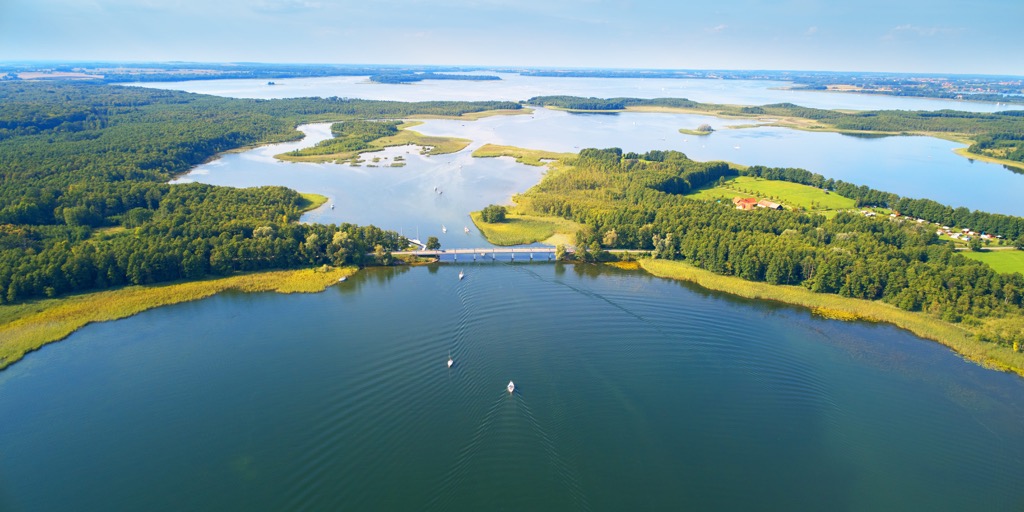
With a length of 1,047 km (651 mi), the Vistula (Wisła) is the longest river in Poland and the ninth longest river in Europe. It spans the country's length, starting from the Barania Góra Mountains in the southwest before emptying into Vistula Lagoon and Gdańsk Bay.
The capital and largest city in Poland is Warsaw (Warszawa). Other notable cities in Poland include Kraków, Szczecin, and Łódź.
Much of Poland was shaped by two major geological events. A continental collision between Europe and Africa roughly 60 million years ago created many of Poland's mountain ranges, including the Tatras and the Sudeten.
The Quaternary glaciation of northern Europe, around 3 million years ago, shaped the mountains of southern Poland into their current shape. This glaciation also formed the moraine landscapes in northern Poland. These lowlands to the north consist mainly of sand, silt, and clays.
The oldest mountains in Poland are the Świętokrzyskie Mountains (Góry Świętokrzyskie). Also known as the Holy Cross Mountains, the Świętokrzyskie Mountains have geological formations dating back 500 to 220 million years and are some of the oldest mountains in Europe.
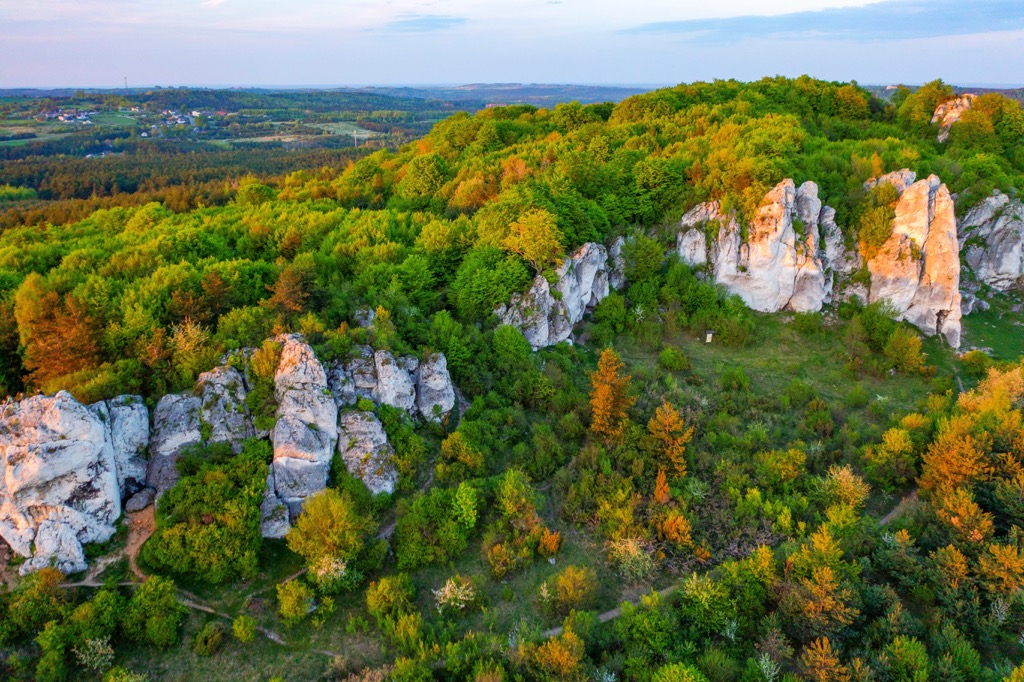
Some deposits in the Świętokrzyskie Mountains date back to the Cenozoic Era, Mesozoic Era, and Paleozoic Eras. The range is composed mainly of quartzitic sandstone, Early Devonian sandstone, slate, and mudstone.
Many of Poland's mountain ranges are composed of sedimentary limestone, such as the Polish Jura Uplands (Krakowsko-Częstochowska), the Pieniny Mountains, and the Western Tatras. Meanwhile, the Beskids, the High Tatras, and the Karkonosze Mountains are mainly composed of granite and basalts.
The Tatras could be considered the roof of Poland, with all 70 of the country's 2,000 m (6,561 ft) and over summits located within the range. The Tatras is also the highest range in the entirety of the Carpathians.
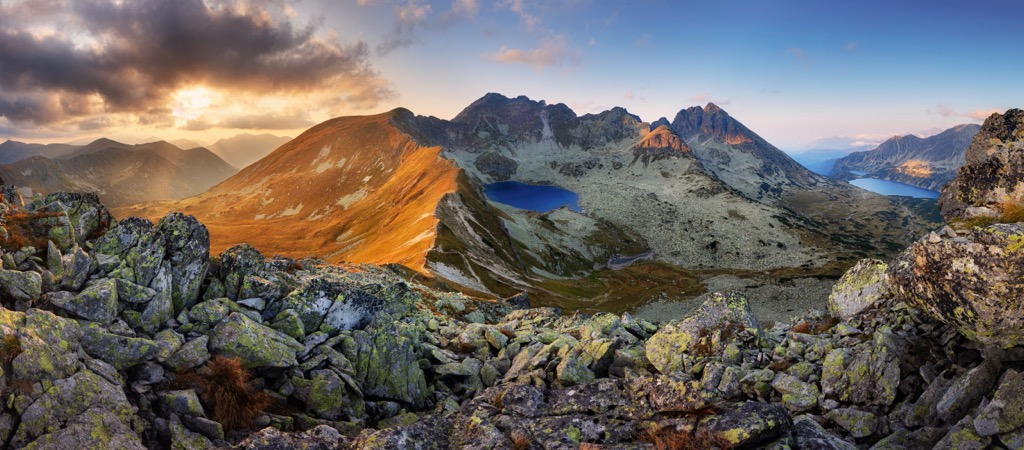
Despite its relatively temperate climate, Poland is home to the Błędów Desert. This 32 sq km (12 sq mi) desert is located in the Silesian Voivodeship and is one of only 5 natural deserts in Europe. It was formed by hundreds of thousands of years of glaciation.
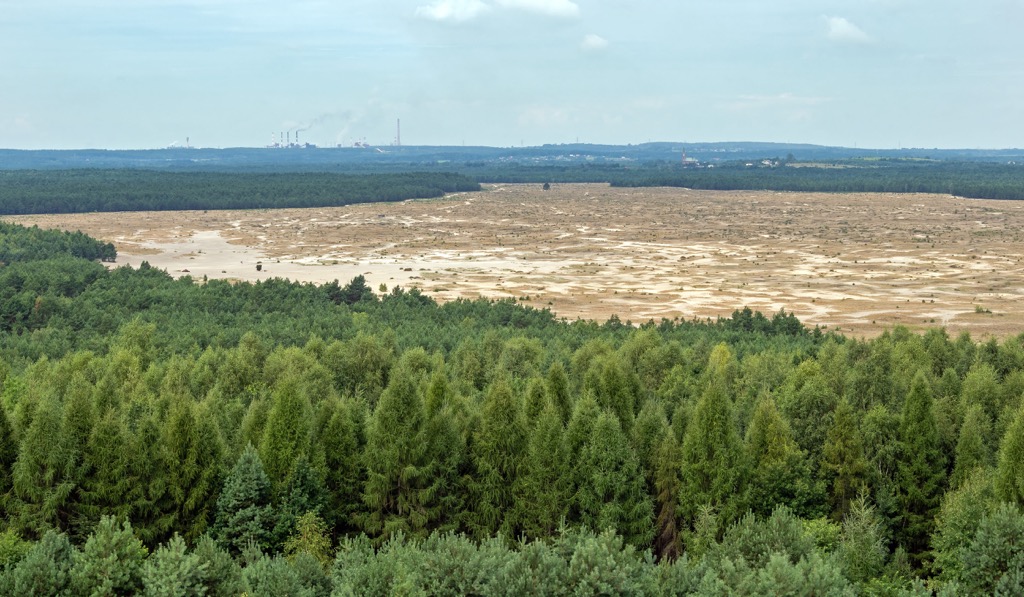
Aside from the country's highest summit, Rysy (2,503 m/8,211 ft), other notable mountains in Poland include Tarnica (1,346 m/4,416 ft) in the Bieszczady Mountains, Turbacz (1,310 m/4,298 ft) in the Gorce Mountains, and Trzy Korony (982 m/3,222 ft) in the Pieniny Mountains.
With over two dozen national parks, untouched primeval forests, and a blend of central Europe's finest flora and fauna, Poland is the perfect place to reconnect with nature. Read on to learn about Poland's wildlife.
There are over 700 vertebrae and 480 bird species present in Poland. Several large mammal species inhabit the country. Eurasian brown bears live high in the Carpathian Mountains, elk roam coniferous forests, and once-extinct European bison now thrive in Białowieża Forest.
A wide variety of fascinating carnivorous mammals can be found in Poland, such as gray wolves, Eurasian lynxes, raccoon dogs, and Eurasian otters. Other notable mammals in Poland include red deer, moose, Eurasian beavers, wild boars, and mountain hares.
Poland is an important nesting spot for many migratory bird species. The most important is the white stork, with 40,000 breeding pairs present in the summer, accounting for a quarter of the global population. The white-tailed eagle is the national bird of Poland.
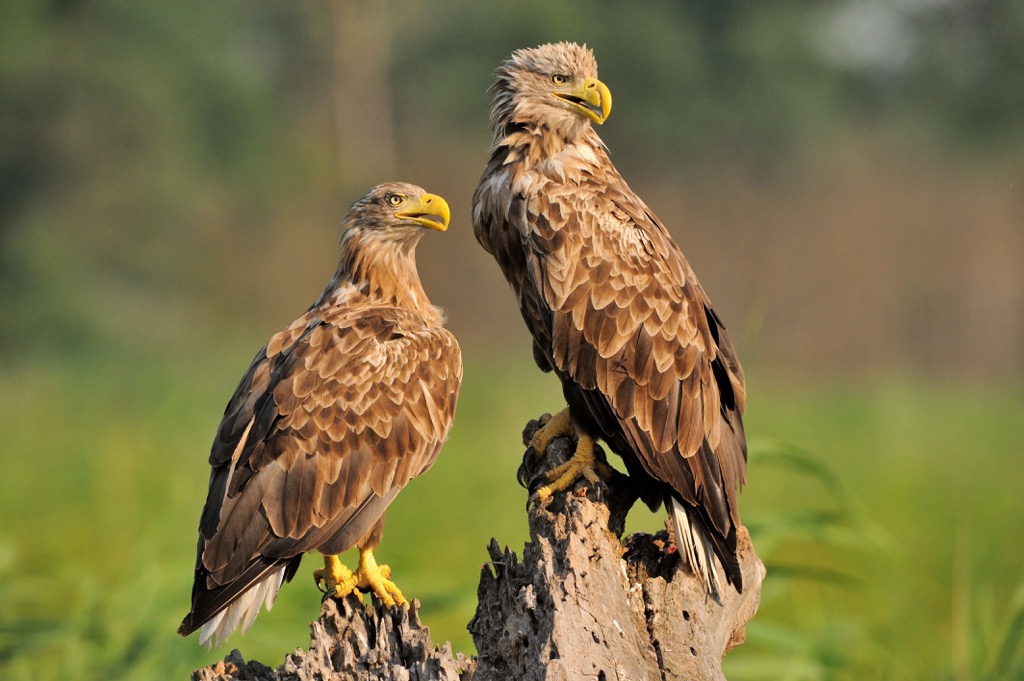
Other bird species which can be spotted in Poland include common chaffinches, Eurasian jays, greater flamingos, western capercaillies, greater spotted woodpeckers, and crested tits.
There are only nine native reptile species in Poland. The common European adder is the only venomous snake in Poland. Other reptile species include sand lizards, pond sliders, and eastern slowworms.
Of the 18 amphibian species in Poland, notable examples include fire salamanders, edible frogs, and European fire-bellied toads.
Insects are by far the most numerous fauna in Poland, with roughly 27,000 species identified. There's a wide variety of species, such as European firebugs, ruddy darters, red admiral butterflies, European mantises, and hornet moths.
Poland's numerous lakes and rivers are well-stocked with over 80 species of fish. Common fish species found in the country's waterways include trout, zander, carp, tench, and salmon.
Poland is home to roughly 5,780 flora species in total, including lichens, mosses, and fungi. Of these, there are approximately 2,250 seeded species.
Over 30 percent of Poland is carpeted in forests, making it the fourth most forested country in Europe. These forests are well-managed, with this percentage likely to increase to 33 percent by 2050.
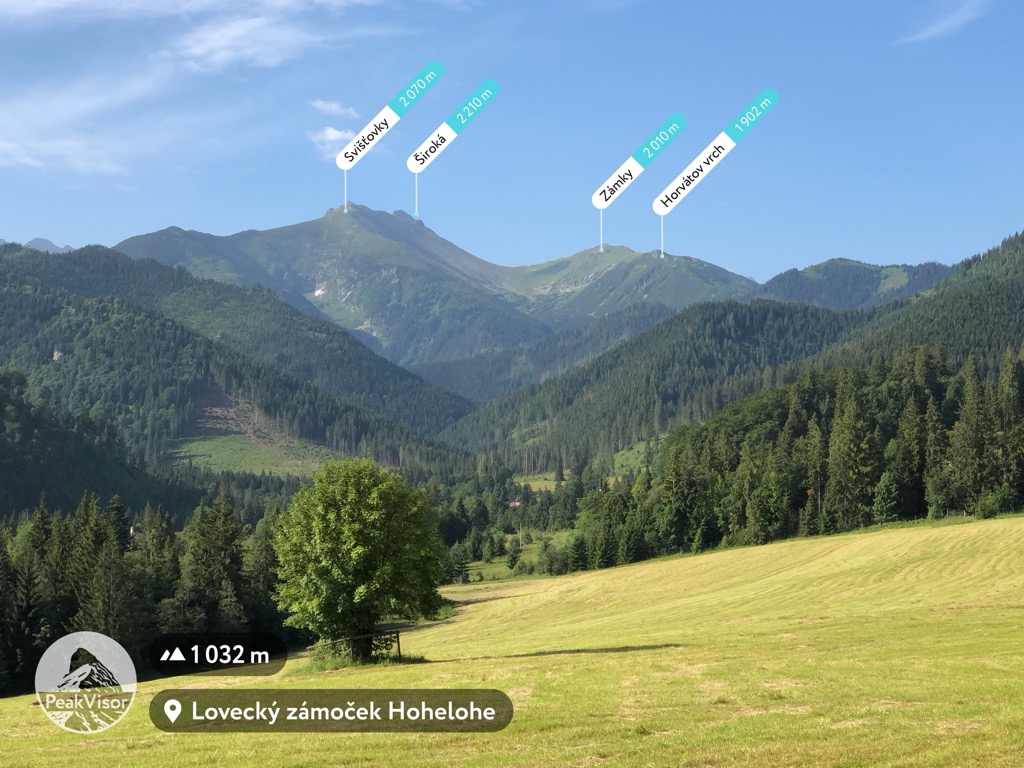
One of Poland's most important floristic features is the 1,200 sq km (460 sq mi) Białowieża Forest. The forest, which extends across Poland's border with Belarus, is the largest remaining area of mixed primeval forest that used to cover the European Plain. Białowieża Forest consists mainly of alder, beech, oak, pine, and spruce.
There are 15 plant species identified as endemic to Poland. Significant examples include Polish larch, violet larkspurs, Arolla pines, and Pontic azaleas.
The red poppy is the national flower of Poland. Due to its biodiversity, Poland is home to an array of rare plant species, such as globe flowers, Siberian Irises, wolfsbane, and purple gromwells.

Common flowering plants that grow across Poland include heather, crocuses, freesias, geraniums, and amaryllis.
Fungi are prevalent in Poland, with 47 native species approved by the government for consumption. Mushroom pickers will find a wealth of edible fungi, including chanterelles, saffron milk caps, boletes, and parasols.
The prehistory of Poland is believed to trace back roughly 600,000 years. However, the earliest human remains uncovered date back only 100,000 years. They were the remains of a Neanderthal child found in Dark Cave (Jaskinia Ciemna).
Prior to the Middle Ages, many tribes inhabited modern-day Poland, including Celts, Slavs, Balts, and Germanic clans. It wasn't until the Early Middle Ages that the Lechitic Western Polans, a Slavic tribe, began to settle the area. Modern Poland takes its name from Lechitic Western Polans.
The House of Piasts, Poland's first dynasty, ruled the country from the tenth century CE until the fourteenth century. Duke Mieszko I is widely recognized to have established Poland as a state and is credited for the country adopting Western Christianity in the tenth century.
The most successful ruler of the Piast dynasty was Casimir III the Great, who oversaw significant economic growth and a rise in Poland's international reputation. The Piast dynasty ended in 1370 when Casimir III the Great died without any male heirs.

The Jagiellonian dynasty from the fourteenth to sixteenth century saw the establishment of the Polish–Lithuanian Commonwealth in 1569. The Commonwealth became one of the largest countries in Europe.
The Commonwealth prospered until the mid-seventeenth century. Several wars, including the Russo-Polish War, devastated the country's economy and political system.
By the eighteenth century, Polish territory was divided between the Russian Empire, the Kingdom of Prussia, and the Habsburgs. Between 1795 and 1918, no real Polish state existed, despite a strong sense of independence amongst the Polish people.
Poland would only regain sovereignty in the wake of the First World War when the three powers in control of Polish territory were severely weakened. The Second Polish Republic was established in 1918 and lasted until 1939 when Nazi Germany and the Soviet Union invaded.
Around 6 million Poles died during the Nazi genocide, approximately 3 million of which were Jewish. This figure accounted for roughly a fifth of Poland's prewar population. The Polish government continued to function and aid Allied forces during this time despite being in exile.
The retreat of Nazi Germany from Poland in 1945 eventually led to the establishment of the Polish People's Republic in 1952, a satellite communist state of the Soviet Union.
However, the aftermath of the Second World War saw Poland gravitate away from the east towards western social and economic values. As a result of the establishment of the Solidarity trade union and subsequent political movement, Poland moved to a capitalist economy and parliamentary democracy in the late 1980s. The Third Polish Republic was founded in 1989.
Poland became a member of NATO in 1999 and part of the European Union (EU) in 2004. However, Poland has not taken the Euro as its official currency and still uses the Polish złoty.
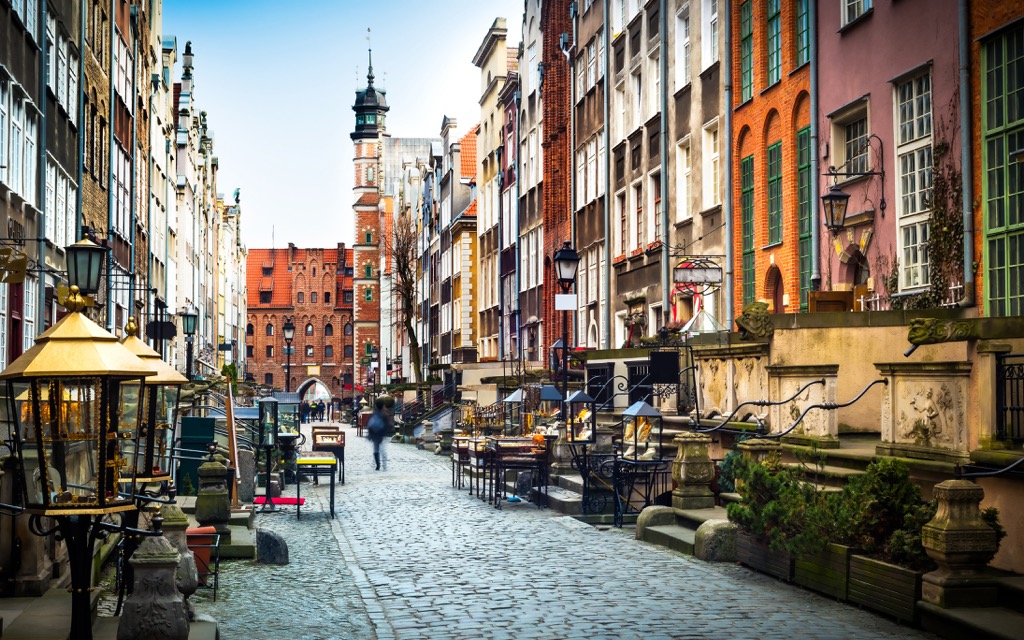
Home to 23 national parks and some of the finest mountains in the Carpathian and Bohemian Massif, Poland is one of central Europe's best hiking destinations.
Poland's highest summits are potentially dangerous, so ensure you're well-prepared. Bring appropriate hiking gear, food and water, and topographic maps. Map out your route carefully and inform others of your itinerary. Visit national park visitor centers for more information on trail closures and weather conditions.
Read on to learn about some of the best hikes in Poland.
Tatra National Park is one of Poland's most popular hiking destinations, covering an area of 211.64 sq km (81.71 sq mi) within the Lesser Poland Voivodeship on the Slovakian border. Home to the highest mountain range in Poland, the park receives approximately 3 million visitors annually.
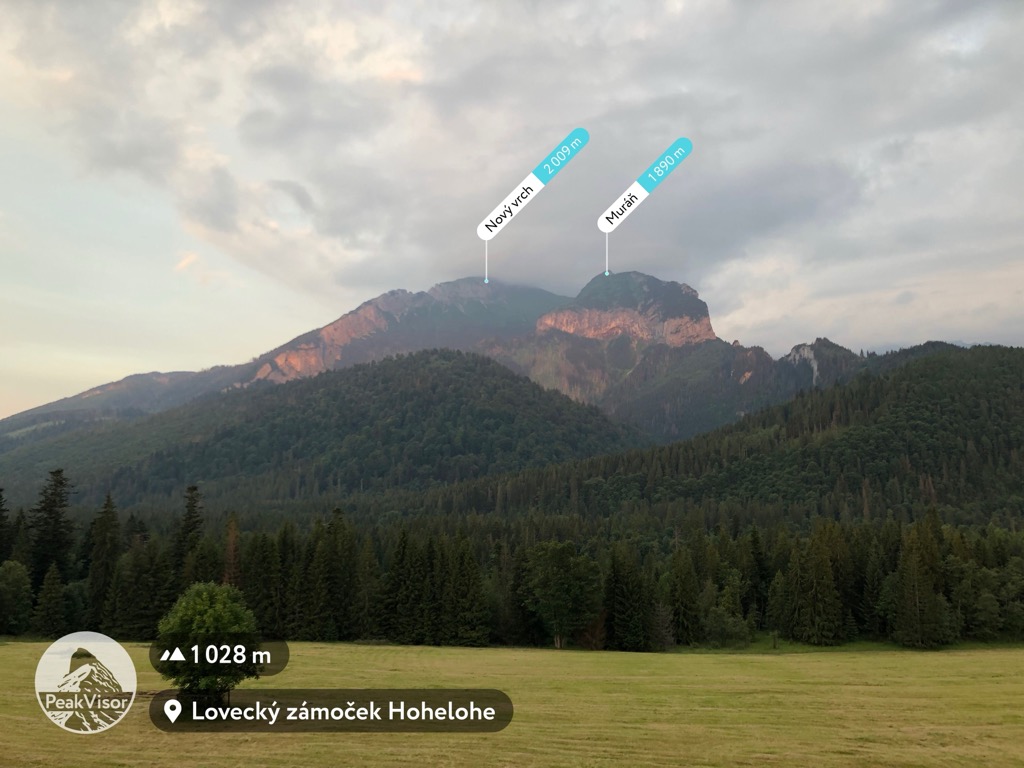
During your visit, you'll have the chance to discover roughly 275 km (155 mi) of hiking trails that weave across the High Tatras (Tatry Wysokie) and Western Tatras (Tatry Zachodnie).
Tatra National Park's trails are extensive and marked in five different colors: black, blue, green, red, and yellow. These colors don't denote difficulty and are for identification purposes only.
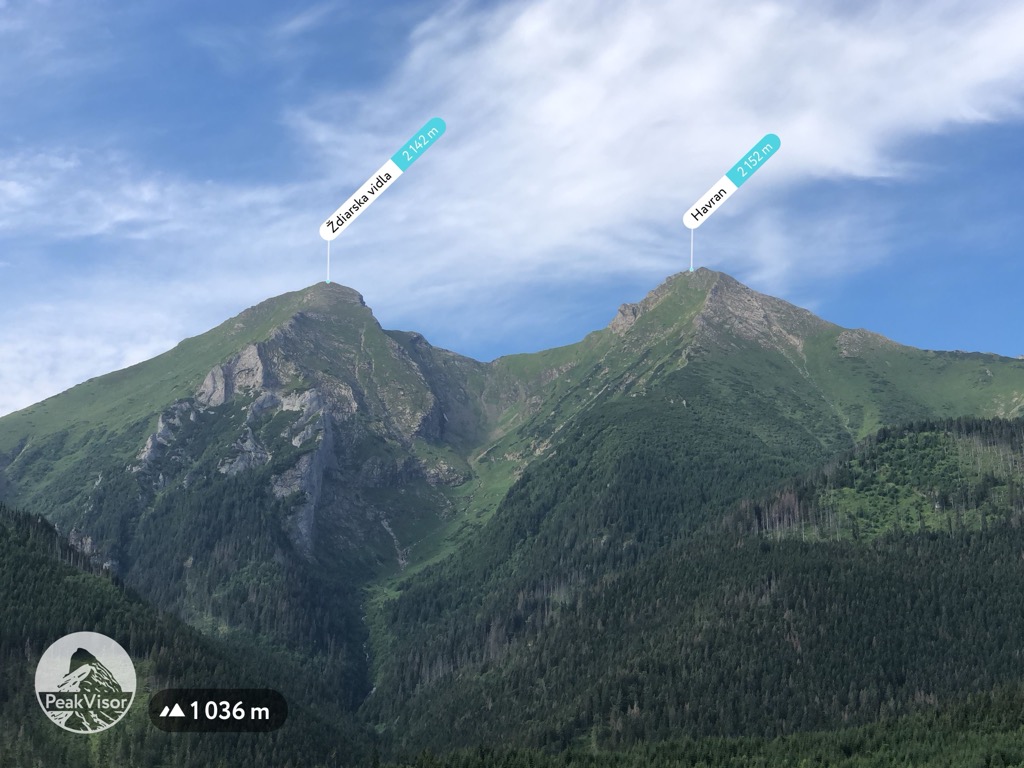
Wielki Giewont (1,894 m/6,214 ft) is one of Poland's most famous mountains. It's an instantly recognizable mountain due to its steep 600 m (1,968 ft) tall northern wall. The principal peak in the Giewont massif, Wielki Giewont is considered the symbol of the town of Zakopane. The summit of Wielki Giewont is marked with a 15 m (49 ft) tall metal cross.
One of the most popular routes to the summit of Wielki Giewont starts from the tourism center in Kuźnice. The trail leads through the Strążyska Valley (Dolina Strążyska) on the way to the summit of Wielki Giewont before descending via Grzybowiec (761 m/2,497 ft).
The trail from Kuźnice is approximately 7 mi (11.5 km) in length and ends at Parking Dolina Strążyska on the park's northern boundary. This trail is considered difficult and is best suited to experienced hikers. Climbing and scrambling are necessary on parts of this trail.
The hike to the summit of Rysy (2,503 m/8,211 ft) is considered one of the best treks in Poland. The summit of Poland's highest peak offers stunning views of two lakes: Czarny Staw pod Rysami and Morskie Oko. Morskie Oko, the largest lake in the Tatra Mountains, is regarded as one of the world's most beautiful lakes.
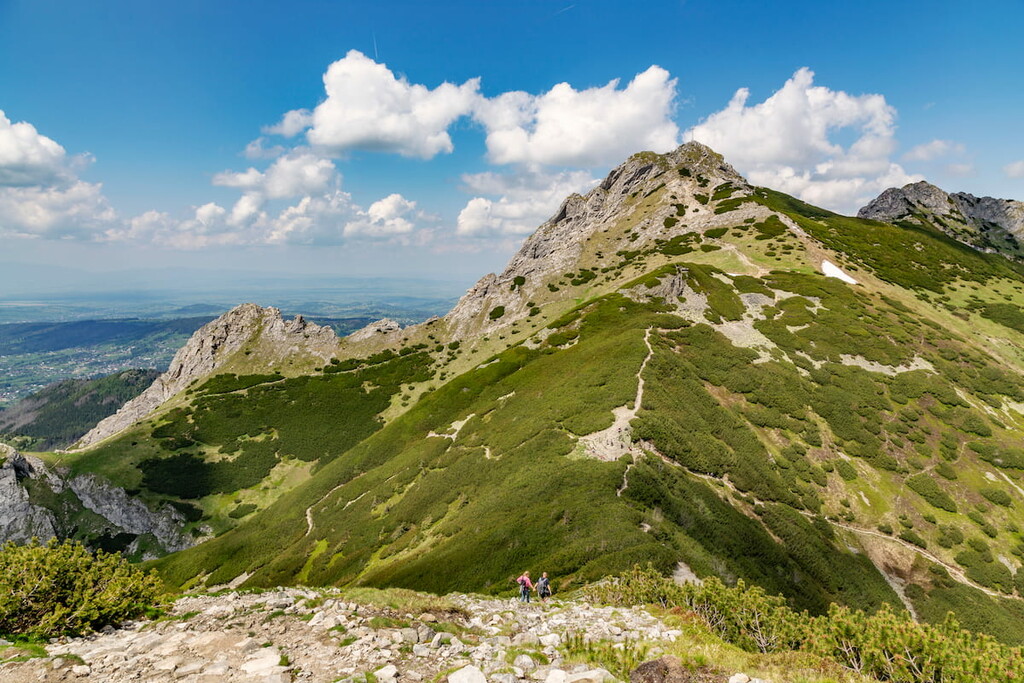
One of the easiest routes to Rysy is on the red trail from the Palenica Białczańska parking area. The trail leads south through the Roztoki Valley (Dolina Roztoki) before skirting the eastern edge of Czarny Staw pod Rysami and Morskie Oko on the way to Rysy's summit. This out-and-back trail is approximately 7.7 mi (12.4 km) in length.
Karkonosze National Park encompasses an area of approximately 55.7 sq km (21.5 sq mi) within the Lower Silesian Voivodeship on the Czech border. The park is popular with tourists, receiving roughly 1.5 million visitors annually.
Karkonosze National Park's main feature is the highest summits in the Sudetes, known as the Giant Mountains (Karkonosze). The park is renowned for its ecological diversity and is home to roughly 320 vertebrae species.
Many hikers come to Karkonosze National Park to scale Śnieżka (Sněžka) (1,603 m/5,259 ft). Poland's most prominent mountain, Śnieżka (Sněžka) was one of the first Polish mountains to become popular with tourists, with ascents dating back to 1456. With its curved summit, Śnieżka (Sněžka) offers few technical challenges.

One of the most popular trails to the summit of Śnieżka (Sněžka) is the Śniezka Okólnik. The trail starts and ends in the ski resort of Karpacz. The trail skirts the ridge above Wielki Staw before passing over Kopa nad Moreną (1,407 m/4,616 ft) on the way to Śnieżka (Sněžka). The Śnieżka Okólnik trail is approximately 19.5 km (12.1 mi) in length.
Another hugely popular mountain in Karkonosze National Park is Szrenica (1,362 m/4,465 ft). Szrenica's name originates from the polish word szron, meaning frost, and is one of the Sudete's most popular ski destinations. The mountain is home to several fascinating rock formations, including the Horse Heads (Końskie Łby) and the Three Pigs (Trzy Świnki).
One of the most popular routes to Szrenica is the out-and-back trail from Parking Wodospad near Szklarska Poręba. The route follows the red-marked Main Sudetes Trail (Główny Szlak Sudecki) through woodlands straight to Szrenica. The trail is approximately 11.5 km (7.1 mi) in length.
Bieszczady National Park is Poland's third-largest national park, covering an area of approximately 292 sq km (112.7 sq mi). It's located in the Subcarpathian Voivodeship. The park receives over 400,000 annual visitors and is home to roughly 132 km (82 mi) of hiking trails.
The park centers around the highest summits in the Bieszczady Mountains. Approximately 80 percent of the park is forested. In 1992, the park became a part of the UNESCO East Carpathian Biosphere Reserve.
The most popular hike in Bieszczady National Park is to the summit of Tarnica (1,346 m/4,416 ft), the highest summit in the Bieszczady Mountains. It's one of the 28 Crown of Polish Mountains (Korona Gór Polski). A large metal cross, similar to the one found on Wielki Giewont, marks the summit.
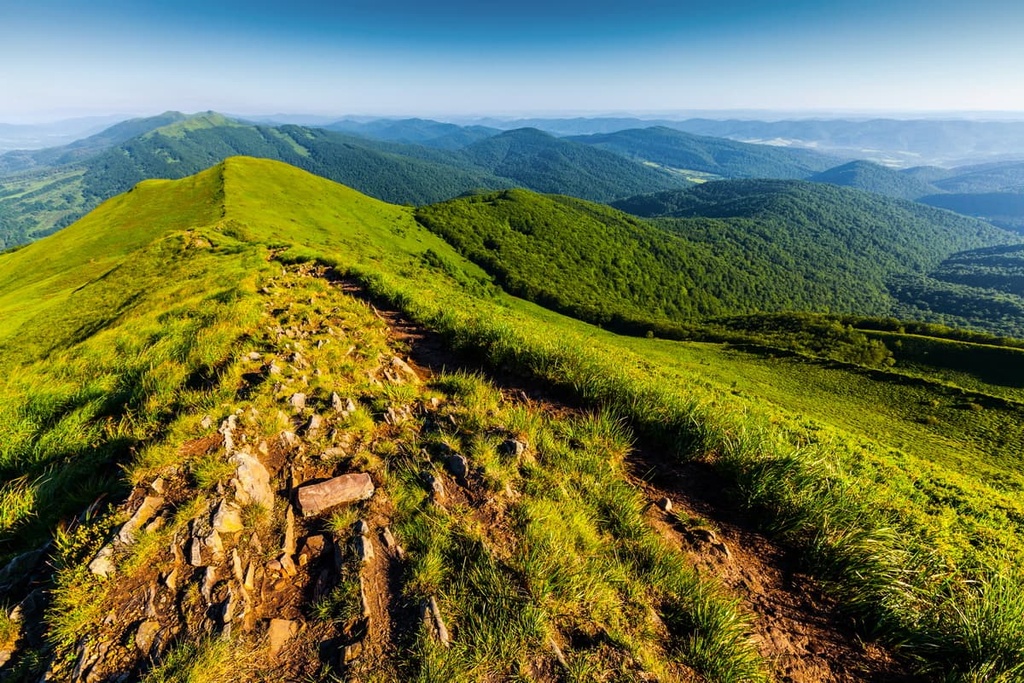
The Wołosate - Tarnica - Wide Wierch - Ustrzyki Górne route is among the most popular trails in Bieszczady National Park. The trail starts from Wołosate, following the blue markers to the summit of Tarnica. It then descends towards Ustrzyki Górne, passing over Tarniczka (1,315 m/4,314 ft) and Szeroki Wierch (1,268 m/4,160 ft). This looped trail is approximately 19 km (11.8 mi) in length.
One of the most picturesque hikes in Bieszczady National Park is across the Połonina Caryńska. One of the two hugely popular mountainous meadows in Bieszczady National Park, Połonina Caryńska affords sweeping views of the highest mountains in Bieszczady National Park, including Tarnica and Halicz (1,333 m/4,373 ft).
The best way to explore Połonina Caryńska is on the out-and-back trail from Brzegi Górne to Ustrzyki Górne. The trail leads over the highest summit in Połonina Caryńska, Kruhly Wierch (1297 m/4,252 ft). This trail is approximately 8.7 km (5.4 mi) in length.
Babia Góra National Park (Babiogórski Park Narodowy) covers an area of approximately 34 sq km (13.1 sq mi) in the Lesser Poland Voivodeship on the Slovakian border. The park attracts more than 100,000 visitors annually.
The park centers around the heavily forested Babia Góra massif within the Orava Beskids (Oravské Beskydy). The park's main feature is the highest summit in the Orava Beskids, Babia Góra (1,722 m/5,649 ft).

The main summit of Babia Góra, also known as Diablak ("Devil's Peak"), is the second-highest of the Crown of Polish Mountains after Rysy. One of the best ways to scale Babia Góra is on the Red Trail from Przełęcz Krowiarki.
The trail passes over several mountains on the way to Babia Góra, including Sokolica (1,367 m/4,485 ft), Kępa (1,525 m/5,003 ft), and Gówniak (1,676 m/5,499 ft).
After reaching the summit of Babia Góra, the trail continues on to Mała Babia Góra (1,517 m/4,977 ft) before returning via the Schronisko PTTK Markowe Szczawiny (1,179 m/3,871 ft) mountain hut. The Red Trail is approximately 14.5 km (9 mi) in length.
The Stołowe Mountains National Park, also known as the Table Mountains National Park, covers an area of approximately 63.4 sq km (24 sq mi) within the Lower Silesian Voivodeship on the Czech border. Stołowe Mountains National Park receives over 900,000 visitors annually.
The park comprises the Polish side of the Table Mountains (Góry Stołowe) within the Central Sudetes. The Table Mountains are a flat-topped sandstone mountain range with sharp ledges. They are the only mountains of their kind in Poland. Other features of the park include narrow gorges, rock formations, spruce forests, and peat bogs.
One of the main attractions in Stołowe Mountains National Park is Szczeliniec Wielki (922 m/3,024 ft). One of the Crown of Polish Mountains, Szczeliniec Wielki is popular with tourists thanks to its impressive rock formations and the views it provides of the surrounding Sudetes.
Szczeliniec Wielki is a straightforward hike, with well-marked trails and handrails leading up to the summit. Szczeliniec Wielki is hugely popular, so expect to see many other hikers during your visit.
The quickest and easiest way to climb Szczeliniec Wielki is on the tourist trail from Karłów. This looped trail takes you through several narrow gorges, including Hell (Piekło), the deepest ravine in the Szczeliniec Wielki massif.
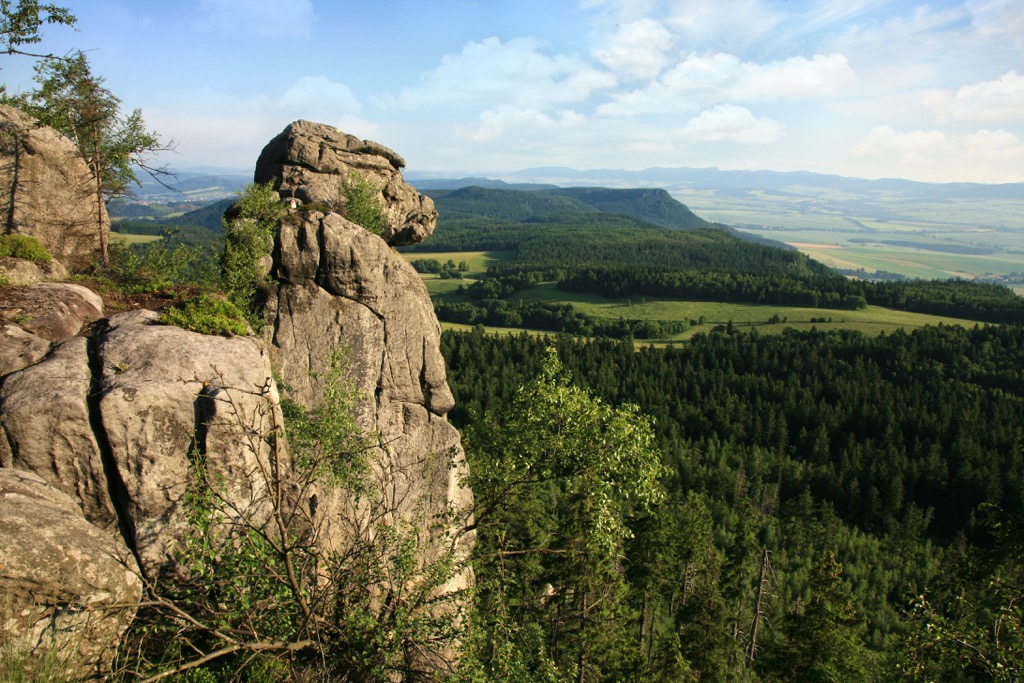
The walk's highlight is the view from the Grandfather Armchair (Fotel Pradziada), the highest rock formation of Szczeliniec Wielki. You'll be treated to panoramas of the Bystrzyckie and Karkonosze Mountains from the Grandfather Armchair. This trail is approximately 3.7 km (2.3 mi) in length.
Stołowe Mountains National Park is full of unusual rock formations, and one of the best is Błędne Skały (851 m/2,792 ft). Also known as Errant Rocks, Błędne Skały is an otherworldly sandstone rock labyrinth on the Polish/Czech border. Be aware there’s a fee to enter Błędne Skały.
One of the best hikes to Błędne Skały is from the YMCA parking lot (Parking bezpłatny YMCA). The trail loops west uphill through woodlands to Błędne Skały before returning via the slopes of Lustrzana Góra (918 m/3,012 ft). The trail is approximately 9 km (5.6 mi) in length.
Pieniny National Park covers an area of 23.4 sq km (9 sq mi) in the Lesser Poland Voivodeship on the Slovakian border. Over 700,000 tourists visit Pieniny National Park annually, making it one of the most popular parks in Poland.
The park encompasses the heart of the Pieniny Mountains, a mountain range stretching across Poland's southernmost area. The Pieniny Mountains consist of heavily eroded limestone and dolomite, creating jagged mountain summits and vertical cliffs. It's regarded as one of the most beautiful ranges in the country.
Trzy Korony (982 m/3,221 ft), which translates to "Three Crowns," is literally the crowning jewel of Pieniny National Park. It's the highest mountain in the park and is composed of five jagged limestone peaks, the highest of which is Okrąglica. Atop Okrąglica, a viewing platform overlooks the Dunajec River Gorge.
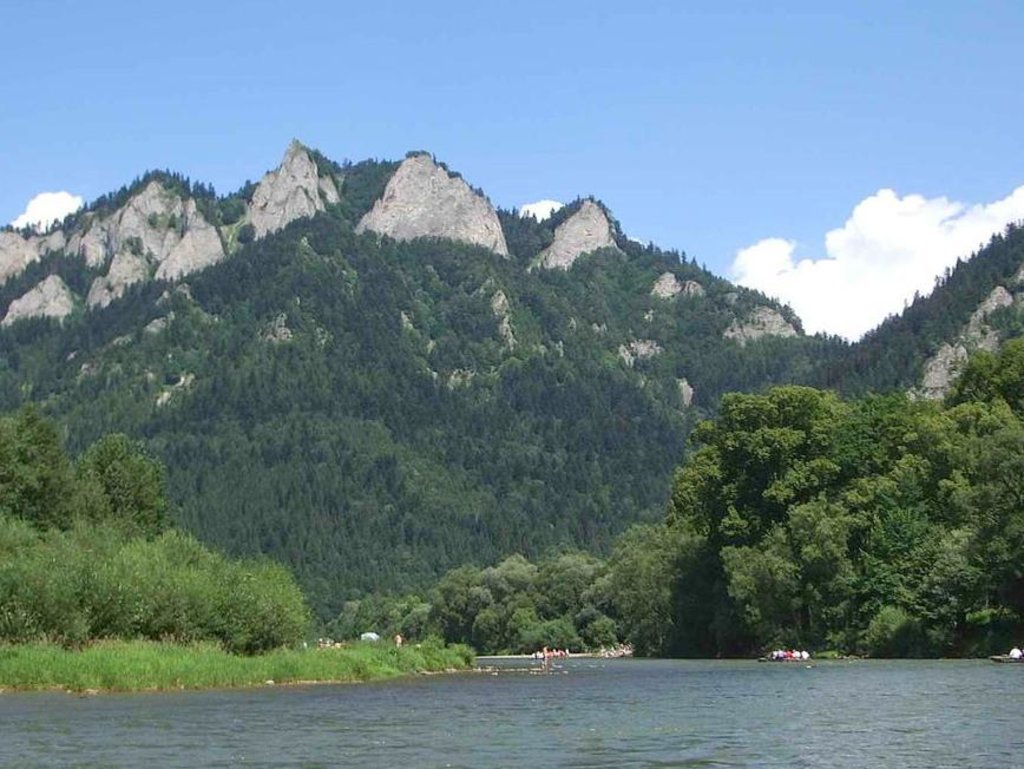
The most popular way of climbing Trzy Korony is from Schronisko PTTK "Trzy Korony" (466 m/1,528 ft) to the north of Sromowce Niżne. The approach to Trzy Korony passes through the Szopczański Gorge (Wąwóz Szopczański). The trail then continues east and loops back to your starting point. This trail is approximately 6 km (3.7 mi) in length.
Silesian Beskids Landscape Park (Park Krajobrazowy Beskidu Śląskiego) is arguably the best landscape park for hiking in Poland. The park covers an area of approximately 386.2 sq km (149.1 sq mi) within the Silesian Voivodeship.
The park's main feature is some of the highest summits in the Silesian Beskids, including Skrzyczne (1,257 m/4,124 ft), the range's highest summit and the eighth tallest of the Crown of Polish Mountains. Skrzyczne's summit provides one of the best views of the Beskids, with Babia Góra and Pilsko (1,557 m/5,108 ft) visible to the southeast.
One of the best ways to scale Skrzyczne is from the Kompleks Narciarski Biały Krzyż ski resort to Szczyrk. This route passes over three significant summits: Malinowska Skała ((1,152 m/3,780 ft), Kopa Skrzyczeńska (1,190 m/3 904 ft), and Małe Skrzyczne (1,211 m/3,973 ft), before reaching Skrzyczne.
From the summit of Skrzyczne, the trail descends north to Szczyrk. This trail is approximately 13.5 km (8.3 mi) in length.
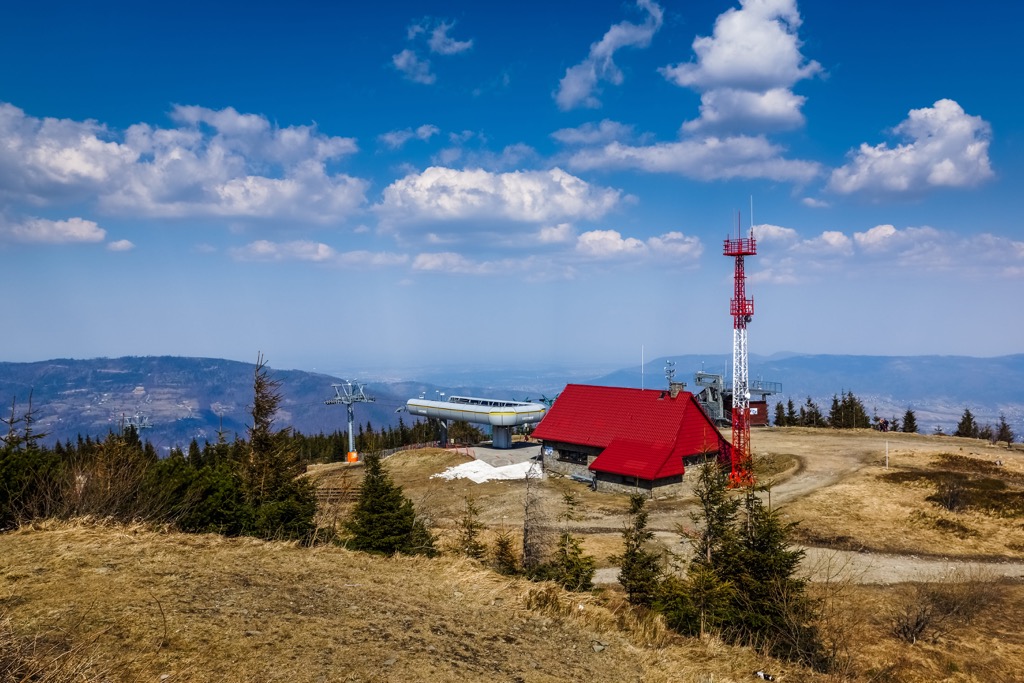
Barania Góra (1,220 m/4003 ft), the second-highest mountain in the Silesian Beskids, is another popular mountain in Silesian Beskids Landscape Park. It's the source of the Vistula, the longest river in Poland. The summit is topped with a 15 m (49 ft) tall watchtower which affords beautiful panoramas of the surrounding range.
The most common route up Barania Góra is on the looped trail from Wisła Czarne. The trail follows blue-marked trails before Barania Góra and red and blue-marked trails on the descent. During your descent, you'll pass over Wierch Wisełka (1,198 m/3,930 ft) and Wierch Równiański (1,162 m/3,812 ft).
UNESCO-protected old towns, bustling metropolises, and picturesque ski resorts await hikers in Poland. Read on to learn about Poland's main cities and towns.
Resting on the River Vistula is Poland's largest and capital city, Warsaw. Badly damaged during the Second World War, Warsaw has become a symbol of European resilience and modernity.
Despite being a rapidly expanding green city with contemporary architecture, Warsaw still has plenty of old-world charm, including its UNESCO-protected Old Town (Starówka), with buildings dating back to the fifteenth century.
During your stay, admire Rembrandt originals at the Royal Castle in Warsaw (Zamek Królewski w Warszawie) or tour the Palace of Culture and Science (Pałac Kultury i Nauki), the sixth-tallest building in the EU.
Warsaw is located at the heart of Poland, with train and bus services connecting it to tourist hotspots across the country.
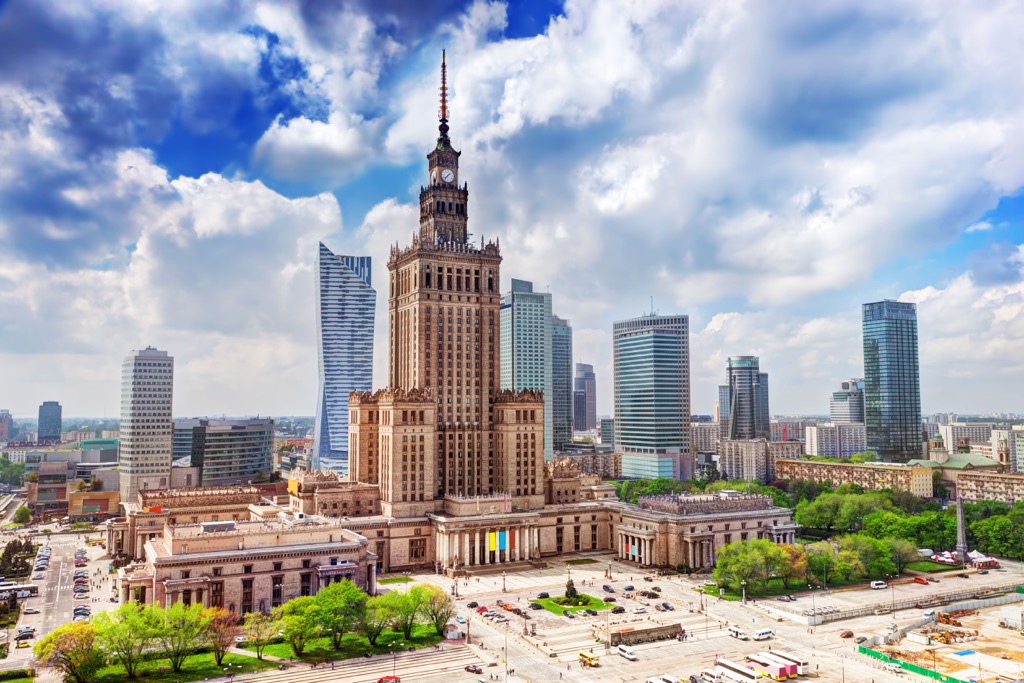
Kraków is Poland's second city and one of its oldest. It dates back to the seventh century and was the country's capital until 1596. Its thirteenth-century Old Town (Rynek Główny) is one of the finest in Europe and was one of the first of its kind to be recognized as a UNESCO World Heritage Site.
Kraków was spared bombardment during the Second World War, meaning many of its historic landmarks remain intact, like the fifteenth-century St. Mary's Basilica (Kościół Mariacki) and fourteenth-century Wawel Royal Castle (Zamek Królewski na Wawelu).
The primary city in the Lesser Poland Voivodeship, Kraków is an excellent base from which to explore some of Poland's best parks. Babia Góra National Park and Tatra National Park are within 120 km (75 mi) of Kraków.
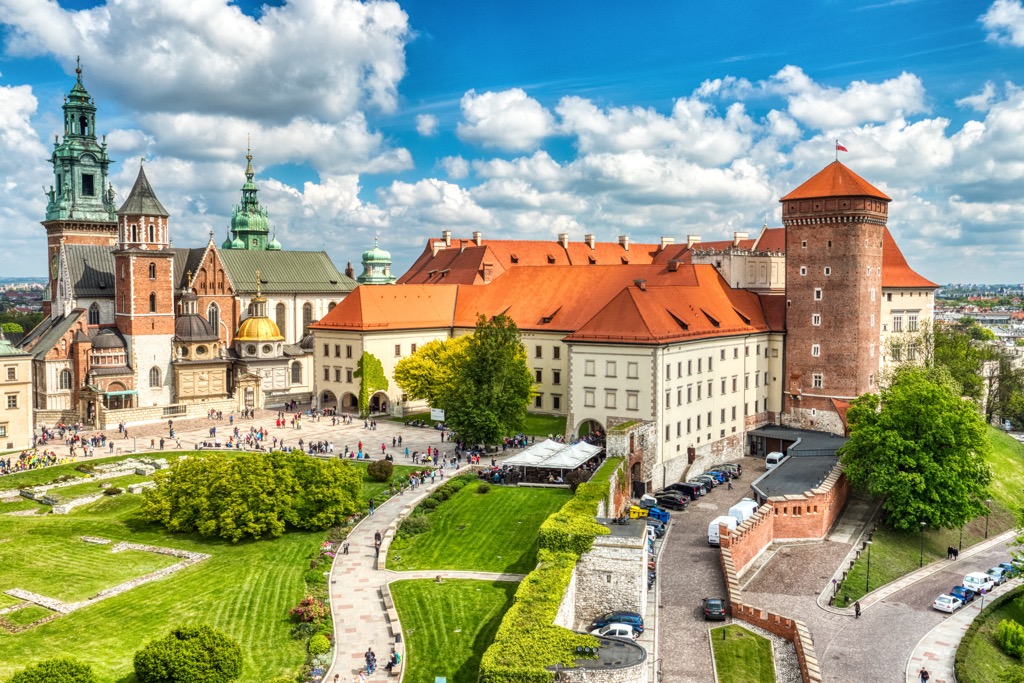
Wrocław is the capital of the Lower Silesian Voivodeship and the third-largest city in Poland. A university city, Wrocław is a vibrant city with exciting cuisine, lively events, and no shortage of nightlife.
Away from student life, Wrocław boasts four UNESCO World Heritage Sites, including the Main Market Square (Rynek we Wrocławiu) and the National Museum (Muzeum Narodowe we Wrocławiu). Wrocław offers something for everyone with attractions like the oldest zoo in Poland, Wrocław Zoo (Ogród Zoologiczny we Wrocławiu), and the thirteenth-century Museum of Bourgeois Art (Stary Ratusz).
Wrocław is less than 40 km (25 mi) from the Sudeten Mountains, making the city a hotspot for hikers. The Stołowe Mountains National Park and Karkonosze National Park are roughly 120 km (70 mi) from Wrocław.
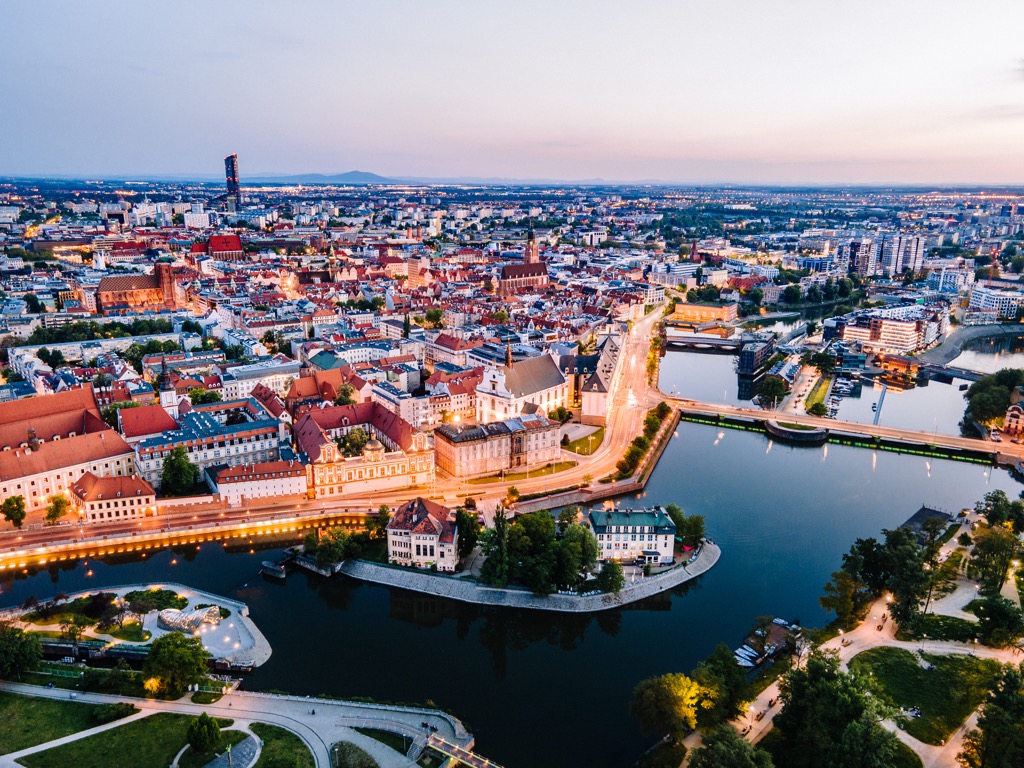
The former industrial city of Łódź is Poland's fourth-largest city. Łódź has put its industrial history behind it to become one of Poland's creative capitals. It's home to the National Film School (Państwowa Wyższa Szkoła Filmowa), where many of Poland's most famous directors and actors learn their craft.
Avant-garde architecture mingles with former factories to create a cityscape that can't be found elsewhere in Poland. Spend your days shopping and taking in culture on Piotrkowska Street, or discover where culture and industry meet at Manufaktura.
Łódź is located at the dead center of Poland, just 135 km (84 mi) southwest of Warsaw. It's one of Poland's best-connected cities, making exploring the rest of the country a breeze.

Zakopane is one of the premier resort towns in Poland. Situated at the foot of the Tatra Mountains, Zakopane is nicknamed "the winter capital of Poland," as people from across the country flock to the town during winter to ski and escape the big cities. Zakopane receives over 2 million visitors annually.
A popular vacation destination for families, Zakopane offers attractions like Aqua Park Zakopane, an indoor waterpark, and Muzeum Oscypka, a museum demonstrating how to make traditional oscypek cheese.
Zakopane sits on the northern edge of Tatra National Park, with Rysy roughly 15 km (9 mi) away and Wielki Giewont less than 5 km (3 mi) away.
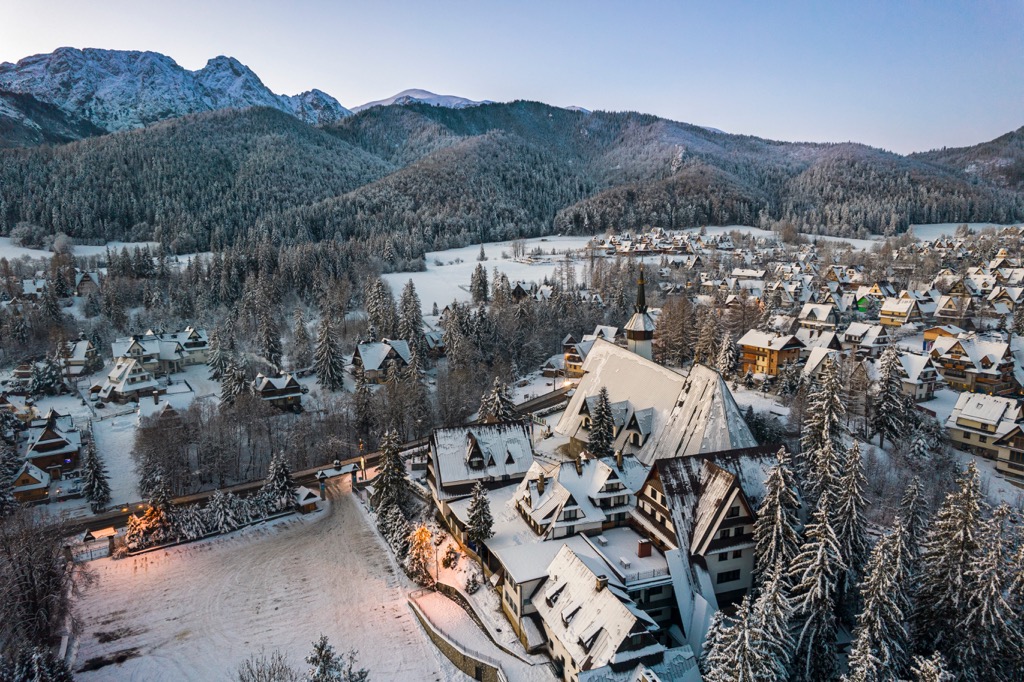
Explore Poland with the PeakVisor 3D Map and identify its summits.








